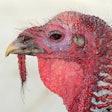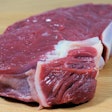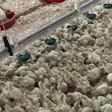In large-scale hatchery operations today, a single hatchery manager is rarely responsible for managing every aspect of chick production or for the maintenance of incubators. He or she no longer relies solely on their own experience and intuitive observations to achieve good quality chicks. In some cases, an incubationist has taken over more routine tasks, including fine-tuning incubation programs and performing egg analyses to solve incubation problems.
The hatchery manager is now responsible for overall hatchery organization, coordinating different teams to work on specific tasks, such as setting eggs or pulling chicks and writing Standard Operating Procedures (SOP) for the different tasks assigned to each team.
He or she must evaluate the output and quality of individual teams and of the combined results that they achieve together. Finally, whether at hatchery level or for a larger poultry integration, it is the manager’s role to report on all outputs to the company’s management team.
Many modern hatcheries are now organized on an industrial scale, requiring tools such as SOPs and Critical Control Points (CCP) in hazard analysis, combined with management tools like Key Performance Indicators (KPI), to manage such complex production businesses effectively.
SOPs should at least be available for the most critical steps in the production of good quality chicks, including:
- quality control for eggs received
- egg disinfection
- egg setting and incubation programs
- egg transfer
- loading the hatchers and hatch programs
- chick pulling and quality control
- vaccination
- chick transport
Critical Control Points are traditionally related to hazard analysis in food safety programs. However today, we increasingly see CCPs related not only to the production of food free of harmful contaminations (bacteria, fungi, etc.), but also to other quality-relevant factors.
In the hatchery, CCPs include temperature and RH in egg storage, for example, to prevent too high a loss of hatchability. The percentage of eggs set with a perfect shape and shell, or chicks with perfect navels or legs might also define CCPs. Often these critical control points represent a reference range of ‘normal’ value measurements (temperature or RH, for example). Measurements outside the CCP’s ‘normal’ range should alert the team responsible that action is required.
A Key Performance Indicator relates to the company’s performance, combining different aspects of management to achieve a common goal. A KPI is more likely to be a business target, for example, to achieve ’low numbers of second class chicks’, which requires all teams, including technical staff, involved in production to work together and be jointly responsible for achieving the KPI. The KPI therefore gives the manager a means of evaluating all teams against a common goal.
We can conclude, therefore, that the hatchery manager can effectively manage and evaluate his teams based on SOPs and defined CCPs created to achieve specific KPIs. Evaluation depends firstly on the quality of the data collected, either by instruments or individual teams. Secondly, collected data should be structured in a relational database, such that mean values and the relationships between those values can be analyzed within a reference range defined as accepted or normal.
Advice
- Describe Standard Operating Procedures for the separate steps needed to produce high percentage volumes of good quality chicks
- Define Critical Control Points for hazard analysis and quality control
- Define Key Performance Indicators at both hatchery and company levels
- Define protocols, including reference ranges for the measurement of data collected for each CCP and KPI
- Include proper data collection procedures for each SOP, based on defined CCP and KPI
















